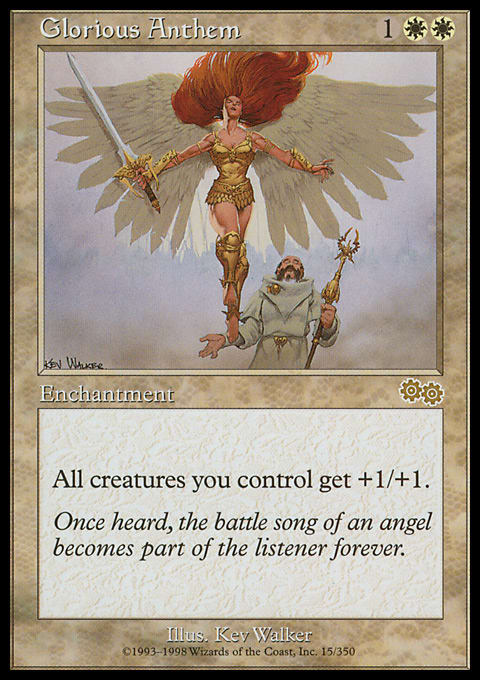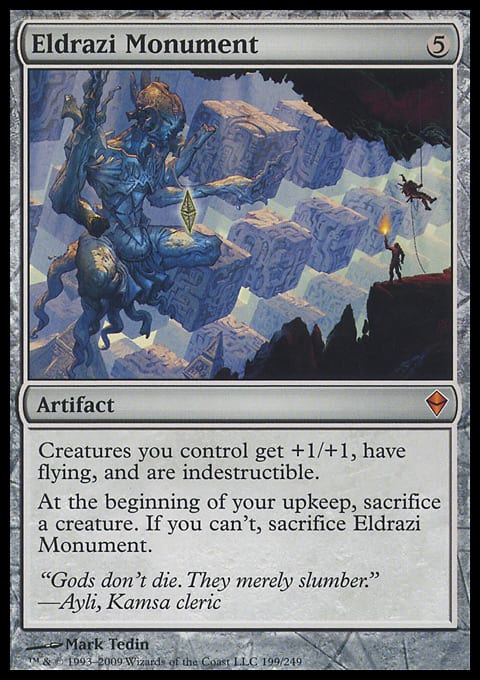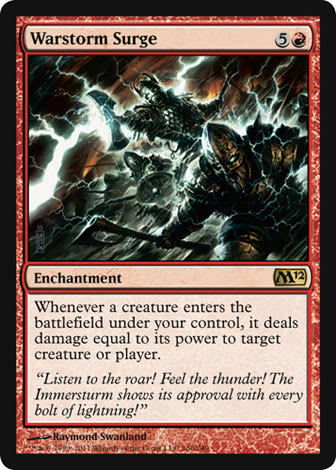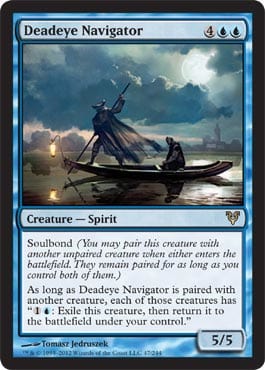On a Sunday morning many years ago, I volunteered to drive my younger sister and her then-boyfriend to his new apartment. Continuing their tradition of letting my sister get away with things that were verboten to me, he had been staying with her and my parents for a few months until he could get on his feet in Brooklyn, so there was a little extra incentive to get him out of my childhood bedroom.
As I drove the side streets, I had my iPod plugged into the tape deck via some serious 1995 sorcery. As every new song came on, I would rattle off the artist. My sister, somewhat impressed and somewhat annoyed, decided to play name that tune with me. She would skip to the next track and hold it there until I could rattle off the artist.
I think it took me ten seconds at most.
After we dropped off the boyfriend, she remarked, “If I had to describe the kind of music you listen to, it’d be anthems.”
She was right. My musical taste trends toward songs that are rallying cries, best heard in small venues with fists raised into an air that is equal parts oxygen and sweat. Camaraderie reigns as everyone shouts the words together.
Anthems in Commander are a tad different. Instead of being a focal point for energy, they spread their power across an army. Drawing their name from the Urza’s Saga Crusade pastiche Glorious Anthem, these cards have been around since the very first printings of Magic. But Anthems are only one type of a card of which I have grown fond.
While I cannot remember the first time she used the phrase, my friend and Commander master Jess Striba has been talking about force multipliers for years. Force multipliers are more than just anthems—they represent singular investments that improve the overall quality of your position.
It should be a no-brainer to include cards like these in all manner of decks. The problem resides format size. In smaller formats, or in ones in which you are allowed to run four copies of a card, consistency can be far more important than raw power. Force multipliers can have diminishing returns in formats in which drawing multiples is not conducive to advancing a board state. Commander is not that world. Rather, it is precisely the place for single cards that have the potential for massive impact.
Force multipliers go beyond anthems. As I said, they are investments that can improve the overall quality of your position. One single card that scales with all previous and future investments is absolutely worth a slot. The fact that Commander, at least the way I play it, involves more than one adversary, one card that does work against multiple opponents on a nonsingular axis is one of those good things. Jason Alt is fond of using cards that scale to the opposition, and force multipliers can do that, but they do a much better job of scaling to your own deck.
So what are the force multipliers out there?
Anthems
These are the cards that most often come to mind when one thinks of investments that improve a board position. Anthems sit on the board and improve the quality of your creatures. There is little else like generating a massive army of token creatures and then slamming an Eldrazi Monument to take flight for victory. Eldrazi Monument is fantastic because it can go into any deck and asks relatively little for some game-breaking power.
Akroma's Memorial may not boost power, but it certainly provides a bevy of other abilities. Still strong with smaller tokens, the Memorial can truly shine when paired with creatures that can make use of its gift of trample.
Tribal decks have a healthy helping of these enhancers. One reason that these—once known as “lords”—are so popular is that they allow otherwise underpowered creatures to punch up. I don’t think a Dragon deck is going to be clamoring to include Crucible of Fire, but a Zombie deck could do much worse than include Diregraf Captain. I have a soft spot for Cemetery Reaper—not only does it boost all of your Zombies, but it also serves a utilitarian role by removing problem members of the graveyard.
Ogre Battledriver may not provide a permanent bonus, but it acts as a potent force multiplier all the same. As do Kolaghan, the Storm's Fury and Ambuscade Shaman. When you get right down to it, every legendary Dragon from Fate Reforged is a sort of force multiplier in those Dragon tribal decks that may or may not want Crucible of Fire.
Anthems are best in decks that rely on creatures. In these stacks, such effects serve to make one of the most fragile investments—creatures—that much better. Considering that attacking is still a viable way to victory, anything that can improve damage output is something that merits consideration.
Pandemoniums
. . . Or Warstorm Surges if you’re feeling less friendly. These multipliers generate effects when something else enters the battlefield. One reason this style of card is so appealing is that they simply reward you for playing a game of Magic. I like to call this the landfall principle: When something provides a benefit because it ties to the natural progression of your game, the opportunity cost of including it in your deck declines.
Think about Purphoros, God of the Forge. The red God has a suite of abilities that begs for Goblin Offensive or another mass token-generator. There is an anthem aspect to Purphoros, but it also sits idly by while generating a massive advantage by having creatures enter the battlefield. Cathars' Crusade wades in similar waters.
Gruul Ragebeast sits on the board while also generating gobs of damage. The ability to fight repeatedly should not be underestimated—especially when you can muster a larger army than the rest of the table. Where Ancients Tread is similarly suited for this role.
My personal favorite card of this ilk may just be Flayer of the Hatebound. I have longed for this effect stapled onto a creature, and while Flayer requires a creature to return from the dead, that isn’t that far outside my reach.
Blood Artists
Speaking of dead thing, cards in the Blood Artist camp reward you for having things die. It should not shock anyone that I am a huge fan of this form of force multiplier. I waxed rhapsodic not long ago about the potency of Kessig Cagebreakers and have dedicated many hundreds of words to a commander that operates in this sphere: Sek'Kuar, Deathkeeper. I even added a kill in this model to my Vela the Night-Clad deck by finding room for a Rite of Replication, which plays rather nastily next to her third line of text when Vela enters the clone vat.
When discussing these magnifying effects, it is important to make sure the delineation between Lhurgoyfs and Blood Artists is distinct. Lord of Extinction cares about dead things, but it does not actively increase their potency or convert them into a discrete resource. Compare this to Pharika, God of Affliction or Strength from the Fallen, which can generate repeatable effects fueled by corpses.
Again, these cards reward lines that players are already more than happy to take. Massacre Wurm is a beating, and the fact that it gives removal spells free kicker is, well, gravy.
Mana Flares
I think it is vital to point out that an abundance of mana may actually be more dangerous than a horde of tokens. The more mana a player has access to, the greater the potential threat. In this vein, cards such as Mana Reflection, Vorinclex, Voice of Hunger, Caged Sun, and Cabal Coffers are terrifying because of their implied threat.
Unlike other force multipliers, Mana Flares are not one step away from an offensive threat. Their strength resides in their ability to produce other threats. In this way, they weaponize mana in the same way Glorious Anthem enhances creatures.
Other
There are some cards, some I have touched on already, that fill multiple roles. Cathars' Crusade operates in two realms. A card like Prophet of Kruphix is tremendously scary in part because it allows for the true weaponization of mana—if you thought Mana Reflection was bad, what about a Quadrupling Cube?
I also return to the idea that Deadeye Navigator is a covert force multiplier. So often, creatures are selected for inclusion due to their abilities to generate spells upon resolving. Deadeye Navigator takes that one attractive element and turns it up—what was once beautiful is now almost too blinding to behold.
Force multipliers also make for dynamic commanders. While I am extremely fond of both Sek'Kuar, Deathkeeper and Xenagos, God of Revels, they are not the only two in my heart. Baru, Fist of Krosa, Mikaeus, the Lunarch, Ascendant Evincar, Elesh Norn, Grand Cenobite, and nearly every tribal-oriented legendary creature can gain a solid return on investment. In my experience, these decks become highly reliant on their commanders. Here, we see the underbelly of power-boosters: They can only increase power and sometimes have difficulty standing on their own. Building around such a commander requires careful planning and redundancy in effects. Strategic resiliency is another good thing that will enable your best-laid plans to go off even if you encounter a hitch.
Force multipliers do work. Despite the expanded deck size, every card in a Commander deck has to earn a slot. When one card can have exponential positive outcomes, it absolutely warrants considerations. What is your favorite force multiplier, and how do you integrate it into your favorite Commander deck?
And while you’re letting me know, I’ll be trying keeping my eyes peeled for other ways to win games while having my creatures die.



























